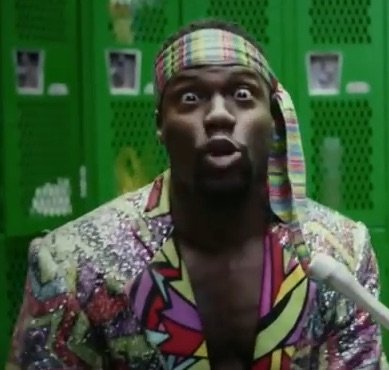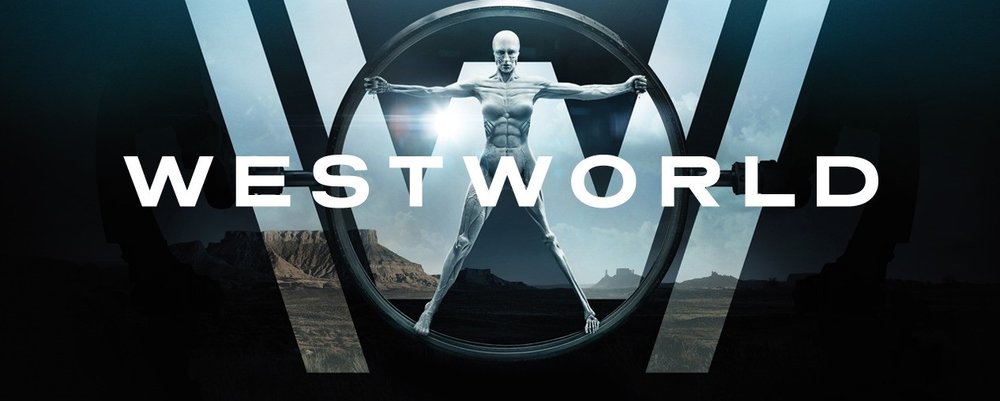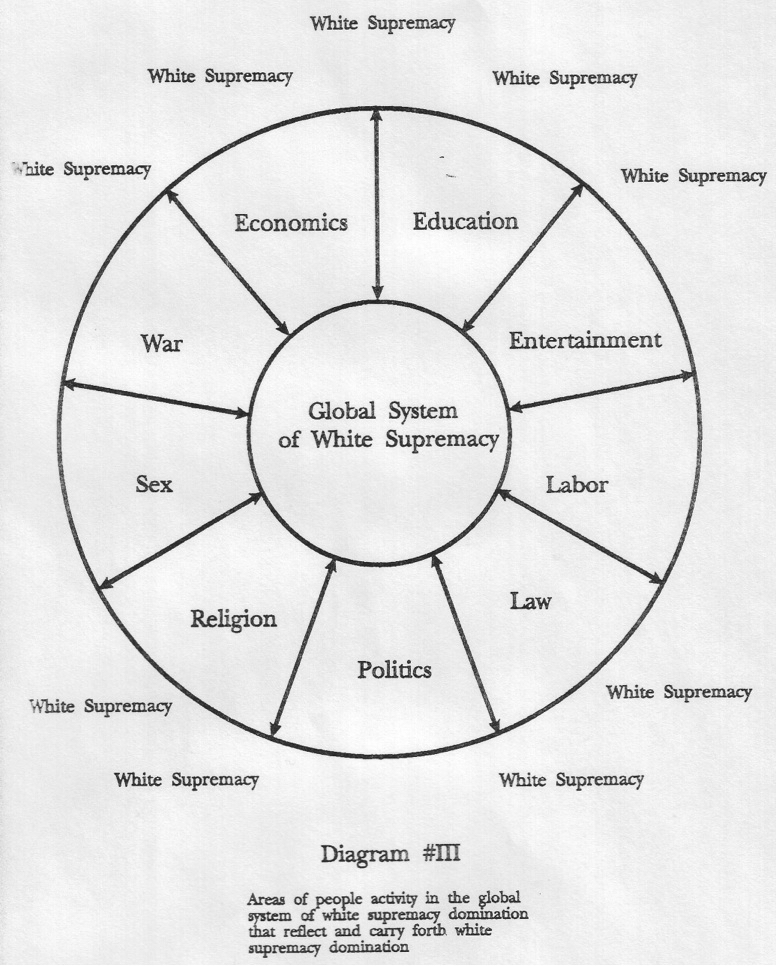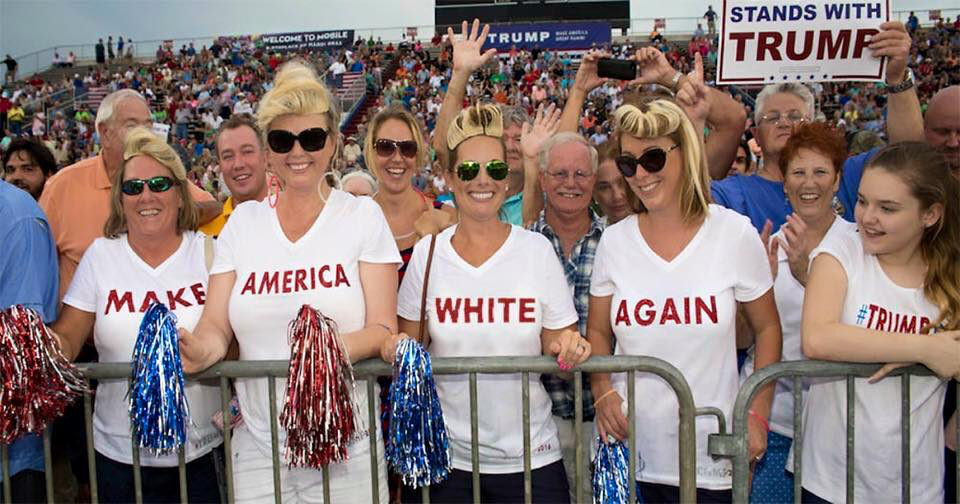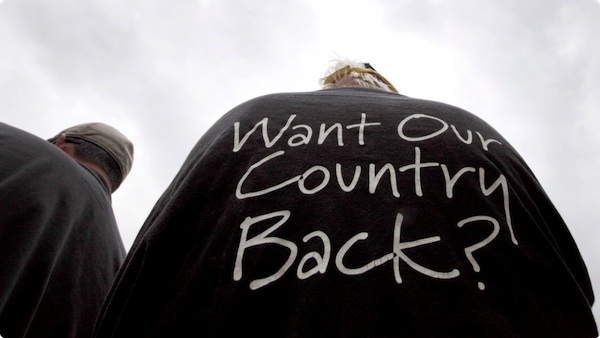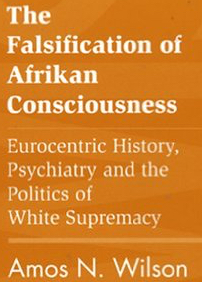The following is an excerpt from "Black on Black Violence. The Psychodynamics of Black Self-Annihilation in Service of White Domination" by Amos Wilson. [MORE]
Well-meaning sociologists and criminologists would have us think that it is unemployment, lack of adequate education job skills, broken homes, drug addiction, learning disabilities, lack of government commitment, Black male irresponsibility, capitalism (that beloved psychopolitical straw man of White radicals and Black socialists), which are among the major causes of Black criminality and Black-on-Black violence. The American community would have us think that increased police surveillance, apprehension and punishment, increased investment in police weaponry and manpower, increased prison construction, longer and harsher sentences, containment of the Black community, "just say no to drugs." war on drugs," "a war on poverty," and the like, would curtail or prevent self-destructive violence, criminality, and social deterioration so prevalent in the African American community. Time and experience have amply demonstrated that such approaches are overworked, ineffective and bankrupt. Moreover, such approaches have not attacked the primary causal factor in Black criminality and violence — White supremacy.
White supremacy by its very nature and intent requires the continuing oppression and subordination of African peoples and, in time, may require their very lives. Subordination of a people requires that that people in some way or ways be violated, dehumanized, humiliated, and that some type of violence be perpetrated against them. The violently oppressed react violently to their oppression. When their reactionary violence, their retaliatory or defensive violence, cannot be effectively directed at their oppressors or effectively applied to their self-liberation, it then will be directed at and applied destructively to themselves. This is the essence of Black-on-Black violence. Oppressive violence is both pro-active and re-active, directed and misdirected. Black men kill each other because they have not yet chosen to challenge and neutralize on every front the widespread power of White men to rule over their lives.
The bane of the African community is the exploitative White American community which projects a so-called civilized, fraternal, egalitarian, liberal face while concurrently seeking to maintain White supremacy. This means that the White American community must maintain African subordination while not appearing to do so. It must cannibalistically sacrifice the vitality, autonomy, and if need be, the life of the African American community while posing as its benefactor and savior. It pleads innocence while washing its hands of the blood of African people. This duplicitous task can only be accomplished by making it appear that the African community is dying of natural causes, not of an ingenious attempt on the part of the White American community to strangle it to death. This means that African American hands must be used to plunge White American-manufactured daggers into the hearts of African American citizens. This is the assigned role of the Black-on-Black violent criminal. How this role is played out will be delineated in the chapters that follow.
To explain the problem of African subordination in terms of racism, racial hatred, and the like, is to misdirect and mislead the African community down the irrational and destructive path of seeking to overcome "racism" (as if "racism" could exist without some race of people being empowered to practice it) while leaving the power (and need) to practice this behavior in White hands. The African American and worldwide African communities have chased phantom explanations and solutions to their detriment. While the explanations and solutions expressed in this book may or may not be accepted by the reader, he or she must accept the fact that new explanations and solutions must be found and applied full speed ahead!
At the center of any explanation of violence in the Black American community must exist a detailed description of the conscious and subliminal psychological/material means by which hostile White American hegemonic attitudes are violently acted-out in African American interpersonal relations. Central to any set of solutions to the problems of crime and violence must exist an effective program for curtailing and rendering ineffective the White American community's ability to practice White supremacy, and to continue its domination, benevolent or otherwise, of African American community life. Additionally, the African American community must so construct its psychopolitical consciousness, its socioeconomic relations, the socialization and education of its children, and its cultural values such that it will no longer permit certain of its segments to be unwittingly recruited to execute against its own body politic, White American death-wishes towards it.
We recognize that unemployment, underemployment, poverty, drugs, poor education, inadequate housing, overcrowding and the like, are tangibly related to Black-on-Black criminality and violence. We question their casual roles, however. They represent secondary effects. They reflect the fact that White Americans at this time possess an inordinate amount of power to defend and extend their economic, psychopolitical, and sociocultural advantages at the expense of African Americans. These advantages such as they are, can only be enhanced and maintained through racist policies and practices, the current White American pretense of accepting racial integration and assimilation notwithstanding. Instead of being a remnant from the past, the social hierarchy based on race is a critical component in the organization of modern American society. The subordination of people of color is functional to the operation of American society as we know it and the color of one's skin is a primary determinant of people's position in the social structure. Racism is the structural relationship based on the subordination of one racial group by another. Given this perspective, the determining feature of race relations is not prejudice towards blacks, but rather the superior position of whites and the institutions — ideological as well as structural — which maintain it.
White American power is utilized to spawn the pre-conditions and conditions of Black-on-Black violence. White American politicoeconomic power has been and is utilized to strip the African American community of its power to defend itself against the plagues of violence, drug abuse, crime, AIDS, and other social/biological ailments which so painfully afflict it. This disempowerment of the Black community, the primary purpose of which is to leave it fundamentally defenseless against White American socioeconomic incursion and exploitation, also leaves it defenseless against the other ills which threaten to totally undermine its health and well-being.
Thus, the conditions which are baneful to the African American community are those conditions which help to maintain White American power and domination over that community. These conditions are so subtly orchestrated that their orchestration is often unnoticed by its intended victims, and are, more often than not, misperceived and misinterpreted by them as originating endemically from their own minds and characters. We argue herein that Black-on-Black criminality and violence play a crucial role in maintaining White American power in all of its manifestations.
A sense of powerlessness and interpersonal violence are inextricably intertwined. Absolute powerlessness as well as absolute power, corrupts.
For violence has its breeding ground in impotence and apathy. True, aggression has been so often and so regularly escalated into violence that anyone's discouragement and fear of it can be understood. But what is not seen is that the state of powerlessness, which leads to apathy and which can be produced by the above plans for the uprooting of aggression, is the source of violence. As we make people powerless we promote their violence rather than its control. Deeds of violence in our society are performed largely by those trying to establish their self-esteem, to defend their self-image, and to demonstrate that they, too, are significant. Regardless of how derailed or wrongly used these motivations may be or how destructive their expression, they are still the manifestation of positive interpersonal needs. We cannot ignore the fact that, no matter how difficult their redirection may be, these needs themselves are potentially constructive. Violence arises not out of superfluity of power but out of powerlessness. As Hannah Arendt has so well said, violence is the expression of impotence.
Black-on-Black criminality and violence represent quests for power and outraged protests against a sense of powerlessness and insignificance. They are protective fetishes used to defend against feelings of helplessness and vulnerability.
Black-on-Black violence is reflective of vain attempts to achieve basic, positive human ends in a negative environment, by negative means. It represents an often misguided, furious struggle for self-affirmation by many African Americans while entangled in a White American-spun spider's web specifically designed and constructed to accomplish their dis-affirmation. Black-on-Black violence and criminality are rooted in "positive" White American values — irrational quests for power, prestige, possession, affection, and acceptance among peers so as to secure illusory reassurances against anxiety, self-contempt, and feelings of inferiority. They are rooted as well in attempts to protect against exploitation by others also caught up in the same rapacious social environment generated and sustained by egregious White American values.
For too many African American youth, being cut off from the paths to legitimate and self-determined personal accomplishment as a result of the underdeveloped power of the African American community, the violent subduing of others may often be their only significant achievement and "claim to fame." They may, as argued by Cloward and Ohlin:
. . . seize upon the manipulation of violence as a route to status not only because it provides a way of expressing pent-up angers and frustrations but also because they are not cut off from access to violent means by vicissitudes of birth. In the w orld of violence, such attributes as race, socioeconomic position, age, and the like are irrelevant; personal worth is judged on the basis of qualities that are available to all who would cultivate them. . . . The acquisition of status is not simply a consequence of skill in the use of violence or of physical strength but depends, rather, on one's willingness to risk injury or death in the search for "rep."
The capacity to perpetrate violence is the great equalizer in a world characterized by great inequalities.
The need of many Black males to achieve power and self-affirmation through the use of violence is cogently stated by Coser when he argues that:
... in disorganized urban areas of American cities, men tend to feel that only prowess in interpersonal violence or in aggressive sexual encounters allows the achievement of personal identity and permit gaining otherwise unavailable deference. Where no social status can be achieved through socioeconomic channels it may yet be achieved in the show of violence among equally deprived peers.
Coser further notes:
Since negroes are assigned the lowest position in all three dimensions of the American status system — ethnicity, class, and education — and since their mobility chances are nil in the first and minimal in the second and third, it stands to reason that achievement in the area of interpersonal violence might be seen as a channel leading to self-regard and self-enhancement — at least as long as conflict with the dominant white majority seems socially unavailable as a means of collective action.
If we are to curb Black-on-Black crime and violence we must choose to see their presence and increase in ways other than as signals for an all-out "war against crime" (read: "war against Black youth, Black males, and the Black community"). Black-on-Black violence and criminality must not be perceived as mere calls to arm a police-state, as the basis for rationalizing increased prison construction and the defensive perception of all Black males as criminals.
These reactionary measures only exacerbate the problem. When will White America (with some very significant proportion of Black America) come to its senses and recognize the various equations it has written on the blackboard of American society? — more police = more crime; more judges = more convicts; more prisons = more inmates; more laws = more criminals; more White repressive violence = more Black reactive violence; more White violence against Black minds = more Black violence against White (and Black) bodies.
The equations must be re-written; new balances must be achieved. And the new equations must include new and equal balances of African American and White American power, prosperity, respect, and positive self-regard.
The constant increase in Black-on-Black violence and criminality reflects the constant incremental generation by prevailing socioeconomic conditions of Black hostility and anxiety fueled by a constantly increasing sense of futility. Thus Black-on-Black violence and criminality are danger signals, flashing red indicators of explosive social inequalities, dysfunctionalities, dislocations, and conflicts. They are alarming reminders that the White American-dominated body politic is diseased, in danger of cardiac arrest, and in need of radical surgery and intensive care.
More than danger signals to White America, Black-on-Black violence and criminality are calls for the radical self-reconstruction and self-empowerment of the African American community. Consequently, the African American community must wrest control over its material and nonmaterial life from non-African hands if it is to rid itself of intracommunal/interpersonal violence. The demise of Black-on-Black violence will begin with the renaissance of authentic Black power.
When we speak of African American/Pan-African self-empowerment we refer not to the bogus, illusory "power" of token Black house-servants, the mock White "power" of the Black bourgeoisie, or the sycophantic, bootlicking, "power" of Black politicians. We neither include the pie-in-the-sky, White Godfearing "power" of Black preachers; the oleaginous diplomatic "power" of puppeted, neocolonial African "heads-of-state," powers which needs ask the permission or authorization of any other race to express and actualize themselves; nor the reactionary, self-destroying, community decimating "power" of the Black-on-Black criminal! We speak here of a true and honest African American/ Pan-African Power which springs full-force from African manhood, womanhood and humanity: a power which harnesses the abundant intellectual, emotional, behavioral, cultural, spiritual and material resources of African peoples and uses them to secure and protect the survival, well-being and self-actualization of the total African community. This power we seek will not be given: it must be taken. This is the moment of truth. The African American/Pan-African community must do — or die!
Amos N. Wilson [MORE]



